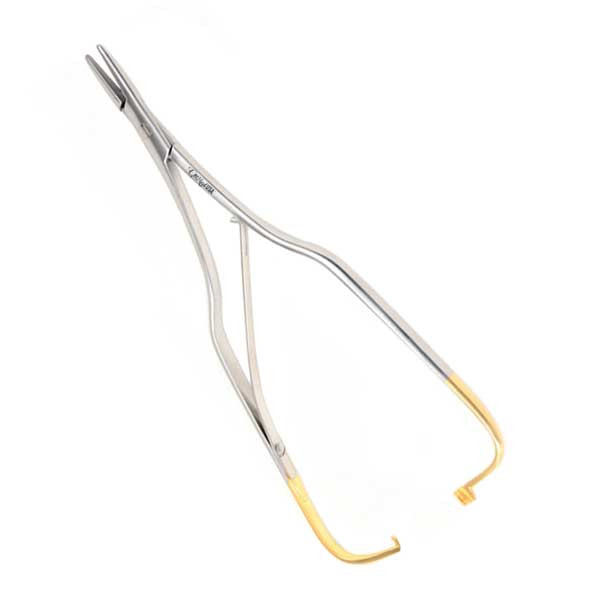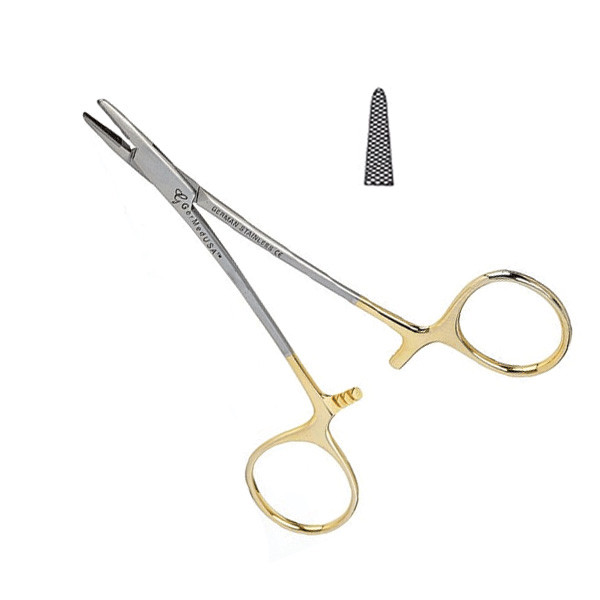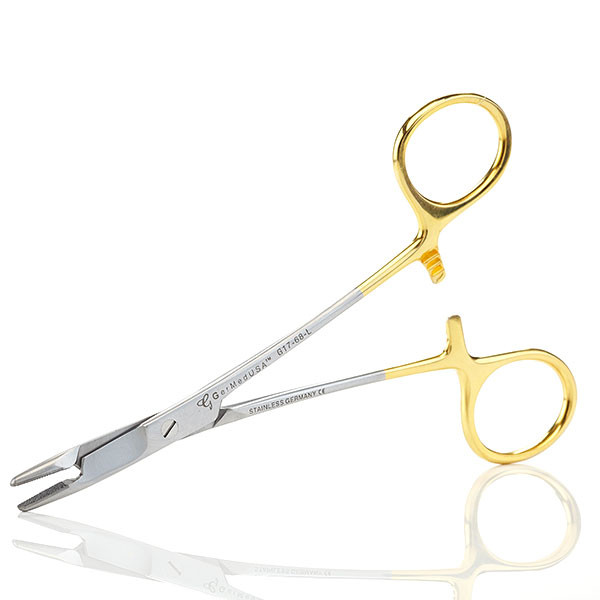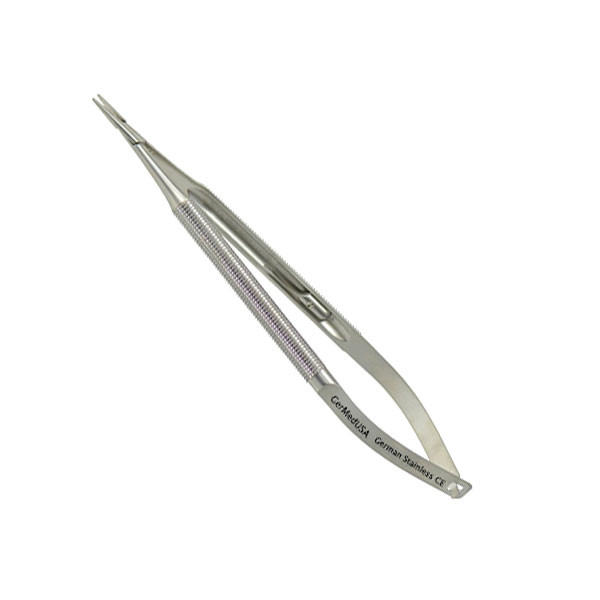Around 64% of adults and 87% of children attend dental exams each year (source: Statista). This rise in dental visits has increased the demand for high-quality dental instruments such as needle drivers.
Needle drivers are important dental instruments used for efficient suture placement and precise positioning of orthodontic wires.
This blog will explore these instruments in detail, including the different types of needle drivers.
An Overview of Surgical Needle Drivers
Needle drivers, also known as dental needle holders, are surgical instruments that professional surgeons use to hold suturing needles when closing wounds and performing other sensitive surgical procedures.
These instruments are made of high-quality German stainless steel to ensure durability and accuracy. Needle drivers come in different sizes and shapes, with each catering to the unique requirements of multiple dental surgeons.
Structural Features of Needle Drivers
All different types of needle drivers share some common components, which are discussed below;
• Jaws: This part securely grips the needle. Jaws are often serrated for enhanced grip on different types of needles and orthodontic wires.
• Ratchet Mechanism: It's the box lock of the dental driver. This locking feature keeps the needle firmly in place throughout the suturing process.
• Shanks: These connect the jaws to the handle, offering varying lengths and angulations for seamless mobility in different surgical fields.
• Handles: Designed for comfortable gripping and control, handles can come in finger-ring or standard styles to suit multiple surgeon requirements.
Why Prefer Quality Dental Needle Drivers?
Precision needle drivers offer several advantages in dental surgical settings that include the following:
Improved Control and Precision
The secure grasping mechanism of a needle driver allows surgeons to manipulate the needle with enhanced control and accuracy during suturing. This helps in accurately placing the needles while minimizing tissue damage.
Enhanced Efficiency
All types of needle drivers have ergonomic designs that enhance surgeons' efficiency and reduce the chances of mistakes. The enhanced efficiency further shortens the procedure time.
Improved Safety
In addition to the above advantages, the needle drivers’ secure handles reduce the chances of accidental slips, promoting a safe surgical procedure for both the surgeon and the patient.
How Many Types of Needle Drivers Are There?
There are different types of needle drivers designed to cater to various surgical needs.
Here is the list of the most common needle drivers:
Arruga Needle Holder
The Arruga Needle Holder dental instrument is a specialized type of needle driver that securely grasps and manipulates suturing needles. Its jaws have cross-serrations, which provide a firm grip on various needle sizes and materials.
In addition, the Arruga needle holders are available in different shapes and sizes: 12 cm curved, 12 cm straight, and 16 cm curved.
This versatility allows surgeons to choose the most suitable instrument based on the specific suturing techniques and surgical approaches required for a particular procedure.
Baumgartner Needle Holder
This needle holder features angled jaws, giving dentists more control over needle placement. The instrument helps dentists accurately target challenging angles for suturing.
Baumgartner needle holder features finger rings for increased comfort and secure hold during sensitive suturing procedures.
Moreover, the instruments’ jaws are crafted from tungsten carbide (TC) for enhanced durability.
These surgical instruments come in different variations, i.e., Baumgartner Needle Holders Serrated 5" Tungsten Carbide and Baumgartner Needle Holder 5 1/2".
Olsen Hegar Needle Holder
This is one of the most versatile types of needle drivers. The instrument encompasses both needle holders and scissors, helping surgeons perform suturing and tissue cutting with one instrument. Olsen Hegar Needle Holder eliminates the need to switch needle holders during delicate surgical procedures.
The Olsen-Hegar Needle Holder is available in the following variations:
• Olsen Hegar Needle Holder Scissors Combination 5 1/2" - Tungsten Carbide Inserts Jaws, Left-Handed
• Olsen-Hegar Combined Needle Holders And Scissors 5 1/2" Serrated Tungsten Carbide, Curved Tip
• Olsen Hegar Needle Holder Scissors Combination 5 1/2" Serrated - Tungsten Carbide
Needle Holder With Spoon
This specialized tool combines the functionality of a traditional needle holder with the added feature of a spoon tip. The ergonomic design ensures reliable performance, allowing for precise and secure handling of needles during suturing tasks.
The spoon tip enhances the instrument's versatility and makes it ideal for tasks requiring delicate tissue manipulation or grasping of sutures.
This needle holder can be used to retract tissues for better visibility, hold sutures, stabilize tissues during suturing, or scoop away debris for a cleaner surgical field.
GerDentUSA offers both designs: Needle Holder With Spoon Curved 6" 15cm and Needle Holder With Spoon Straight 6" 15cm.
To Conclude!
In conclusion, surgical needle holders are essential dental instruments that come in different designs and sizes. Each type of surgical suturing instrument offers improved grip and enhanced precision.
We at GerDentUSA manufacture high-quality German Stainless steel needle drivers. Our instruments are designed to be safe, reliable, and compliant with FDA regulations and quality standards. Additionally, we offer customization options.
FAQs
1. How do I choose the right needle driver?
Choosing the right needle driver depends on the surgery type, needle size, and your preference. It is also recommended that you buy from a reliable instrument supplier.
2. Which type of needle driver can be used for suturing and cutting?
The Olsen-Hegar needle holder can be used to drive suturing needles and cut sutures.





